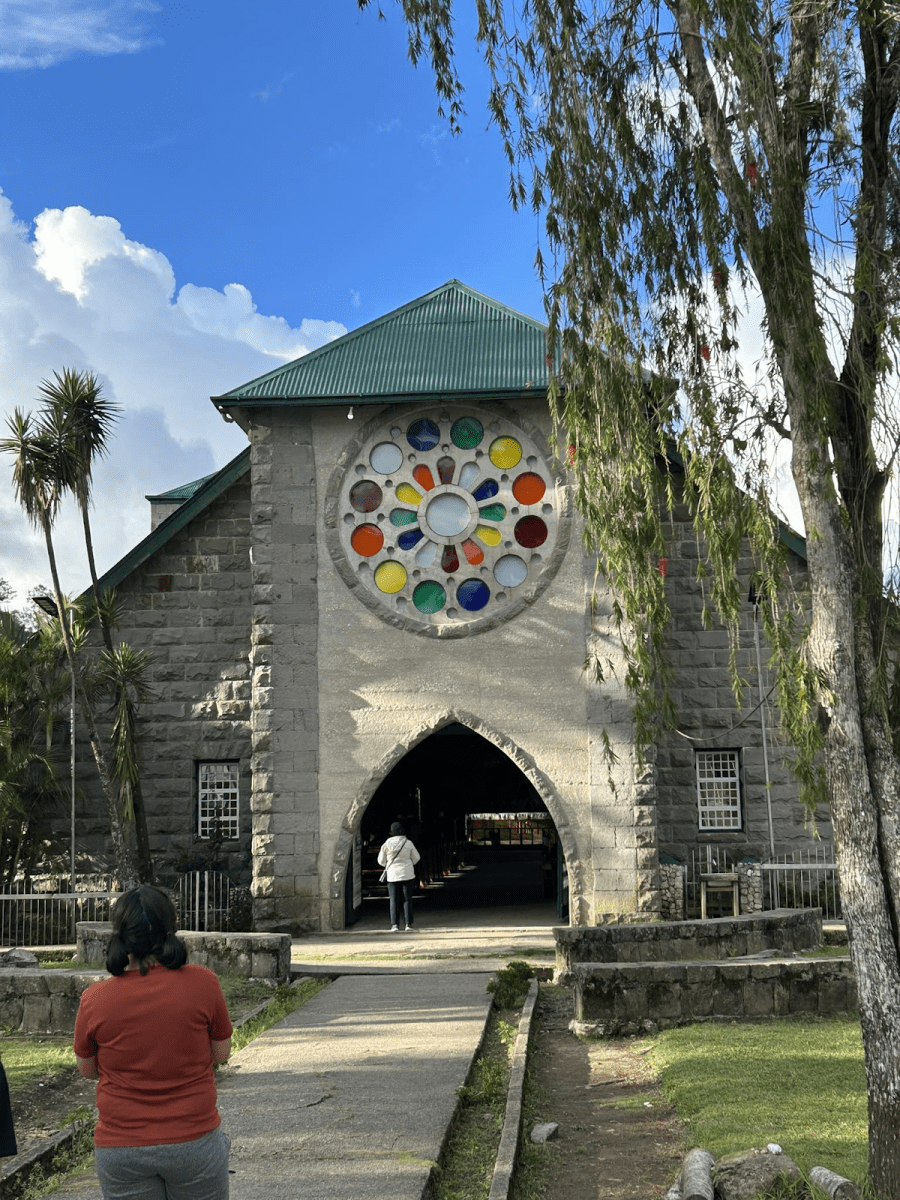Must-See Tourist Spots in Sagada

SHARE
Sagada, a quaint and picturesque town nestled in the mountainous region of the Philippines, is a hidden gem that has been captivating the hearts of travelers for decades. Known for its stunning natural landscapes, rich indigenous culture, and unique burial traditions, Sagada offers a unique and off-the-beaten-path experience for adventure seekers and cultural enthusiasts alike.
When planning your trip to this enchanting town, be sure to include these seven must-see tourist spots in Sagada on your itinerary. You’ll create unforgettable memories and gain a deeper appreciation for the natural and cultural wonders of this remarkable destination.
Pongas Falls
Pongas Falls, nestled in the breathtaking landscapes of Sagada, Mountain Province, is a hidden gem waiting to be discovered by nature enthusiasts. Tucked away in the lush greenery, the falls cascade gracefully down the rugged cliffs, creating a serene and picturesque oasis.
The journey to Pongas Falls often involves a trek through pristine forests and scenic trails, adding an adventurous element to the experience. As visitors approach the falls, the soothing sound of cascading water becomes a melody, inviting a sense of tranquility and peace.
The natural pool formed at the base of the falls provides an opportunity for refreshing dips, making Pongas Falls not just a visual delight but also an immersive retreat for those seeking respite from the hustle and bustle of daily life. The surrounding landscape, with its verdant vegetation and the cool mountain air, adds to the overall charm of Pongas Falls, making it a must-visit destination for those seeking both natural beauty and a serene escape in the heart of Sagada.
Sagada Kapayaw Rice Terraces
Sagada Kapayaw Rice Terraces in Sagada, Mountain Province, stand as a testament to the ingenuity and agricultural heritage of the indigenous people who have cultivated these high-altitude landscapes for generations.
Carved into the mountain slopes, the Kapayaw Rice Terraces showcase a stunning tapestry of lush green paddies that follow the natural contours of the terrain. The unique feature of these terraces is their elevation, as they are situated at a higher altitude compared to many other rice terraces in the Philippines.
The terraces not only serve as a visual spectacle, with their mesmerizing patterns and vibrant hues changing with the seasons, but they also represent sustainable agricultural practices adapted to the challenging mountainous environment.
The cultivation of traditional rice varieties in this serene setting not only supports the local economy but also preserves the rich cultural heritage of the Sagada community.
Visitors to the Sagada Kapayaw Rice Terraces are treated to not just a scenic marvel but an opportunity to witness the harmony between nature and human cultivation in this enchanting part of the Cordillera region.
Hanging Coffins
The Hanging Coffins of Sagada, Mountain Province, stand as a profound testament to the unique burial traditions and cultural practices of the indigenous people of the Cordillera region.
Perched high on limestone cliffs, these suspended wooden coffins evoke a mysterious and awe-inspiring sight. The ancient practice of placing coffins in elevated locations is believed to keep the deceased closer to their ancestral spirits and ensure a smoother journey to the afterlife.
The method of securing the coffins varies, with some being wedged into natural rock crevices, while others are suspended using ropes and wooden stakes.
The Hanging Coffins of Sagada not only serve as a poignant reminder of the cultural legacy of the local community but also attract visitors seeking a deeper understanding of the profound connection between life, death, and spirituality.
Exploring this sacred site, visitors are immersed in the rich history and traditions of Sagada, encountering a blend of reverence for the departed and a profound appreciation for the surrounding natural beauty that frames this extraordinary burial practice.
The Blue Soil Mountains
These captivating natural wonders enchant visitors with their unique and vibrant geological features. Named for the distinctive blue hue of the soil, these mountains offer a breathtaking landscape that stands in stark contrast to the traditional earthy tones found in many other regions.
The mesmerizing blue color is attributed to the presence of copper sulfate and other minerals in the soil, creating an otherworldly and almost surreal atmosphere. As visitors traverse the winding trails and explore the rugged terrain, they are treated to panoramic views of the surrounding peaks, deep valleys, and lush greenery.
The Blue Soil Mountains not only appeal to the senses with their visually striking appearance but also hold cultural significance for the indigenous communities in Sagada, adding layers of history and heritage to this natural marvel. Whether it’s the geological fascination, the picturesque scenery, or the cultural richness, the Blue Soil Mountains in Sagada provide a truly unforgettable experience for those seeking a connection with nature and a deeper understanding of the local landscape.
Sagada Weaving Place
In addition to the captivating natural landscapes, one of the frequently visited destinations in Sagada is the Sagada Weaving.
Established in 1968, it holds the distinction of being a pioneer in the town’s weaving industry. The artisans at Sagada Weaving skillfully engage in both traditional and ethnic weaving methods, employing both the backstrap and upright loom techniques, utilizing exclusively spun polyester.
Their craftsmanship extends to the creation of a variety of products, including bags, slippers, tablecloths, runners, purses, ponchos, and more, all of which are available for purchase in the souvenir shop conveniently located at the entrance.
This weaving center not only offers a showcase of intricate weaving techniques but also serves as a valuable cultural and artistic landmark in Sagada.
Sagada Pottery Place
Enhancing the diversity of our adventurous Sagada schedule includes exploring Sagada Pottery.
Sagada Pottery not only offers its unique earthenware products for sale but also provides visitors with a firsthand look at the intricate process of crafting these items from scratch, offering a comprehensive explanation of the entire procedure.
Beyond the opportunity to observe, they also allow guests to try their hand at pottery. Driving the remarkable craftsmanship at Sagada Pottery are the women of the Applai Kankanaey tribe – Siegrid Bangyay, Tessie Baldo, and Ardeth Butic.
The products they create have garnered attention, being showcased in various fairs and museums. The roots of pottery in Sagada date back to the 1960s when Archie Stapleton, an American potter, introduced the craft to the town.
Stapleton personally taught the women who have continued this tradition, preserving and passing on their skills from generation to generation.
St. Mary’s Church

St. Mary’s Church (or also called Church of Saint Mary the Virgin) in Sagada, Mountain Province, stands as both a religious sanctuary and a testament to the town’s rich cultural and historical fabric.
Nestled amidst the scenic landscapes, the church exudes a tranquil charm with its rustic architecture and serene surroundings. Constructed during the American colonial period in 1907, the church carries a significant legacy, reflecting the enduring spiritual and communal values of the Sagada community.
In 1907, Father John A. Staunton, an Episcopalian priest, and his wife marked a significant moment in Sagada’s history by establishing the Church of Saint Mary The Virgin, marking it as the town’s inaugural Episcopal Church.
The construction of the church utilized locally sourced lumber, and the thatch for the structure was crafted from cogon, a type of grass, including the bell tower. However, in 1909, just two years later, the cogon thatch was replaced with proper shingles, further enhancing the church’s architectural integrity.
The church’s distinctive features include its stone walls and traditional wooden façade, blending seamlessly with the natural beauty of the mountainous terrain.
St. Mary’s Church not only serves as a place of worship but also stands as a symbol of resilience and continuity, bridging the past with the present in this picturesque corner of the Cordillera region.
Visitors to St. Mary’s Church are not only greeted by its historical significance but also by the peaceful atmosphere that pervades this sacred space, making it a must-visit destination for those seeking a deeper connection with the cultural heritage of Sagada.
Upon entering, one is promptly struck by the abundant use of wood in the interior construction, particularly in the ceiling. It appears that pine wood, likely sourced from the nearby forested areas of Sagada, was employed to provide robust support for the church’s roof.
Sagada, with its unique blend of natural beauty, cultural heritage, and adventurous opportunities, is a destination that should not be missed by any traveler looking for an authentic and enriching experience. The combination of stunning landscapes, historical traditions, and the warm hospitality of the locals makes Sagada a must-visit destination for anyone exploring the Philippines.
*Cover Photo/Thumbnail Photo from Buzz Beat Media
RELATED ARTICLES

Business is in the Red? Here’s How a Christian Should Respond

Holy Fire Ignites Faith as Thousands Unite in Jerusalem









